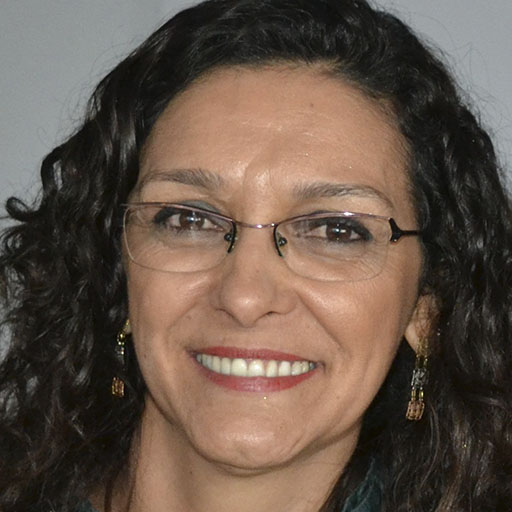Brazil
Since 1995, Brazil has implemented a broad range of large scale assessments at different scales.
In a decentralized country such as Brazil, many regions combine national assessments with their own tests and accountability policies, which often have career and financial implications for schools and teachers.
This is also the case of Minas Gerais, especially since the introduction of the Sistema Mineiro de Avaliação da Educação Pública (SIMAVE) in the year 2000.
Minas gerais
Since 1995, Brazil has implemented a broad range of large scale assessments at different scales.
In a decentralized country such as Brazil, many regions combine national assessments with their own tests and accountability policies, which often have career and financial implications for schools and teachers.
This is also the case of Minas Gerais, especially since the introduction of the Sistema Mineiro de Avaliação da Educação Pública (SIMAVE) in the year 2000.
TEST-BASED ACCOUNTABILITY WORLD ATLAS
SAWA IN MINAS GERAI - BRAZIL
| COUNTRY MINAS GERAIS - BRAZIL | ||
|---|---|---|
| Name of the standardized tests (in primary and low secondary) | Federal level: Prova Brasil, also known as a Avaliação Nacional do Rendimento Escolar (Anresc) |
Minas Gerais national test: Sistema Mineiro de Avaliação da Educação Pública (SIMAVE). |
| Name of the agency in charge of administering the test | Instituto Nacional de Estudos e Pesquisas Educacionais Anísio Teixeira (INEP) of the Ministry of Education (MEC). | Centro de Alfabetizaçao, Leitura e escrita of UFMG (CAELE/FaE/UFMG) e Centro de Políticas Públicas e Avaliação da Educação da Universidade Federal de Juiz de Fora (CAEd/UFJF). |
| Grade(s) in which the test is applied | Prova Brasil (census-based): Grade 4 (ISCED 1), Grade 8 (ISCED 2) and Grade 11 (ISCED 3). Applied in all public elementary rural and urban schools that have at least 20 students enrolled in the grade assessed. |
SIMAVE (Minas Gerais): On even years: Grade 4 (ISCED 1), Grade 8 (ISCED 2), and Grade 10 (ISCED 3) years are evaluated; On odd years: Grade 6 (ISCED 2), Grade 9 and 11 (ISCED 3). Proalfa test (part of SIMAVE) also evaluates Grade 2 (ISCED 1). |
| Areas of knowledge covered by the test | Portuguese language, with a focus on reading, and Mathematics with a focus on problem resolution. | Portuguese language, with a focus on reading, and Mathematics with a focus on problem resolution. Proalfa (SIMAVE) evaluates performance and abilities developed in alphabetization, literacy and writing. |
| Year of adoption | 2005 | 2000 |
description
The federal test (Prova Brasil) is the result of the restructuring of a previous sample-based assessment. Prova Brasil was adopted in 2005 as a census test with the objective to “evaluate the quality of education offered by the Brazilian educational system on the basis of standardize tests and socio-economic questionnaires” (MEC, 2016).
The Minas Gerais System for the Evaluation of Public Education (SIMAVE) is composed of two different evaluations: Programa de Avaliação da Educação Básica (PROEB) and Programa de Avaliação da Alfabetização (Proalfa). SIMAVE was adopted in Minas Gerais by a center-right (PSDB) government in the context of the so-called “managerial shock”. Indeed, amongst other objectives, the test aims at “developing management processes based on a continuous evaluation of public education policies” (MINAS GERAIS, 2000). In addition, the need of implementing a standardized test at the State level has also emerged from the limitations of Prova Brasil in providing longitudinal data. Indeed, SIMAVE evaluates years which were not tested in Prova Brasil, and therefore enables to generate a continuous diagnosis of the primary and lower secondary education systems. All public schools take both Prova Brasil and SIMAVE evaluations in both rural and urban areas.
The results of Prova Brasil are then aggregated together with other indicators of performance and internal efficiency (approval rate, repetition, drop-out) in an index called Índice de Desenvolvimento da Educação Básica (IDEB). With this index, the goal of the country is to reach the average score on PISA in 2021 by creating a baseline for schools compared to their past performance. This is considered to be a major step towards education accountability (OECD, 2010), but with low-stake consequences.
When the SIMAVE results are released, the education secretary categorizes schools according to their performance (low, intermediate and recommended). The results are publicly available but do not generate rankings (Brooke, 2006).
National and state tests have become central in the evaluation and definition of education policies in many Brazilian states. However, the use of their results has evolved during the last decades, passing from diagnostic purposes for the public administration (Augusto, 2012), to the mobilization of school staff and parental and community pressure through the publication of data and pedagogical feedback (Bellamino and Souza, 2012).
SPECIFIC ACCOUNTABILITY POLICIES
AND TOOLS ATTACHED TO THE FEDERAL
AND STATE TESTS (MINAS GERAIS):
INDEX OF SCHOOL AUTONOMY
(OECD, PISA 2015 Database)
*In this case, PISA data is only available at the national level with no disaggregation of regional units for adjudicated regions.c
BRAZIL
OCED average
Source: (OECD, 2015)
PEDAGOGICAL AND MANAGERIAL
SCHOOL AUTONOMY
Managerial autonomy (financial), School autonomy over resource allocation, % of responses
“only principals and teachers” (OECD, PISA 2015, Database)
| Selecting teachers for hire | Firing teachers | Establishing teachers’ starting salaries | Determining teachers’salaries increases | Formulating the school budget | Deciding on budget allocations within the school | |
|---|---|---|---|---|---|---|
| Brazil (principals) OCED average |
26,6 70,3 |
23,8 57,4 |
9,4 20,1 |
7,9 23,4 |
18,9 56,3 |
19,0 75,9 |
| Brazil (teachers) OCED average |
0,9 9,8 |
0,0 1,3 |
0,1 0,7 |
0,1 1,4 |
2,5 6,3 |
6,0 14,8 |
Source: (OECD, 2015)
PEDAGOGICAL AUTONOMY OVER
CURRICULA AND ASSESSMENTS
% of students in schools whose principals responded that only “principals and/or teachers” are responsible of the following tasks (OECD, PISA 2015 Database).
| Establishing student assessment policies | Choosing which textbooks are used | Determining course content | Deciding which courses are offered | |
|---|---|---|---|---|
| Brazil (principals) OCED average |
34,1 61,4 |
12,9 31,9 |
15,3 27,1 |
28,2 63,9 |
| Brazil (teachers) OCED average |
42,2 66 |
88,9 81,8 |
44,4 67,8 |
15,6 41,7 |
Source: (OECD, 2015)
legislation

Lei de Diretrizes e Bases da Educação Nacional no 9.394/1996

Plano Mineiro Desenvolvimento Integrado (PMDI) 2003-2020, Anexo ao Projeto de Lei no /2003.

Lei de Diretrizes e Bases da Educação Nacional no 9.394/1996

Lei de Diretrizes e Bases da Educação Nacional no 9.394/1996

Lei de Diretrizes e Bases da Educação Nacional no 9.394/1996

Lei de Diretrizes e Bases da Educação Nacional no 9.394/1996
references

Andrade E. (2008)
“School Accountability” no Brasil: experiências e dificuldades
Revista de Economia Política, vol. 28, no 3 (111), pp. 443-453

Augusto, M. H. O. G (2012)
Educational regulation and teaching work in Minas Gerais: the obligation of results
Educação e Pesquisa, São Paulo, v. 38, n. 03, p. 695 - 708, jul./set. 2012

Bonamino A. & Souza S. Z. (2012)
Three generations of assessments of basic education in Brazil: interfaces with the curriculum in/of the school
Educação e Pesquisa, São Paulo, v. 38, n. 2, p. 373-388, abr./jun. 2012

Brooke, N. (2007)
O futuro das políticas de responsabilização educacional no Brasil
Cadernos de Pesquisa, 36(128), 377–401.

Freitas D. N. T & Ovando N. G (2015)
A avaliação educacional em contextos municipais
Educ. Soc., Campinas, v. 36, no. 133, p. 963-984, out.-dez., 2015

OECD (2010)
Brazil: Encouraging Lessons from a Large Federal System
Paris: OECD

Oliveira, D. A. (2015)
Nova gestão pública e governos democrático-populares: contradições entre a busca da eficiência e a ampliação do direito à educação
Educação & Sociedade, 36(132)
references

Dalila
Andrade Oliveira
PARTNER
Mentini, L., and Termes, A. (2018). SAWA World Atlas: Brazil, Reforming Schools Globally: A Multi-Scalar Analysis of Autonomy and Accountability Policies in the Education Sector (REFORMED). Retrieved from: http://www.reformedproject.eu/




